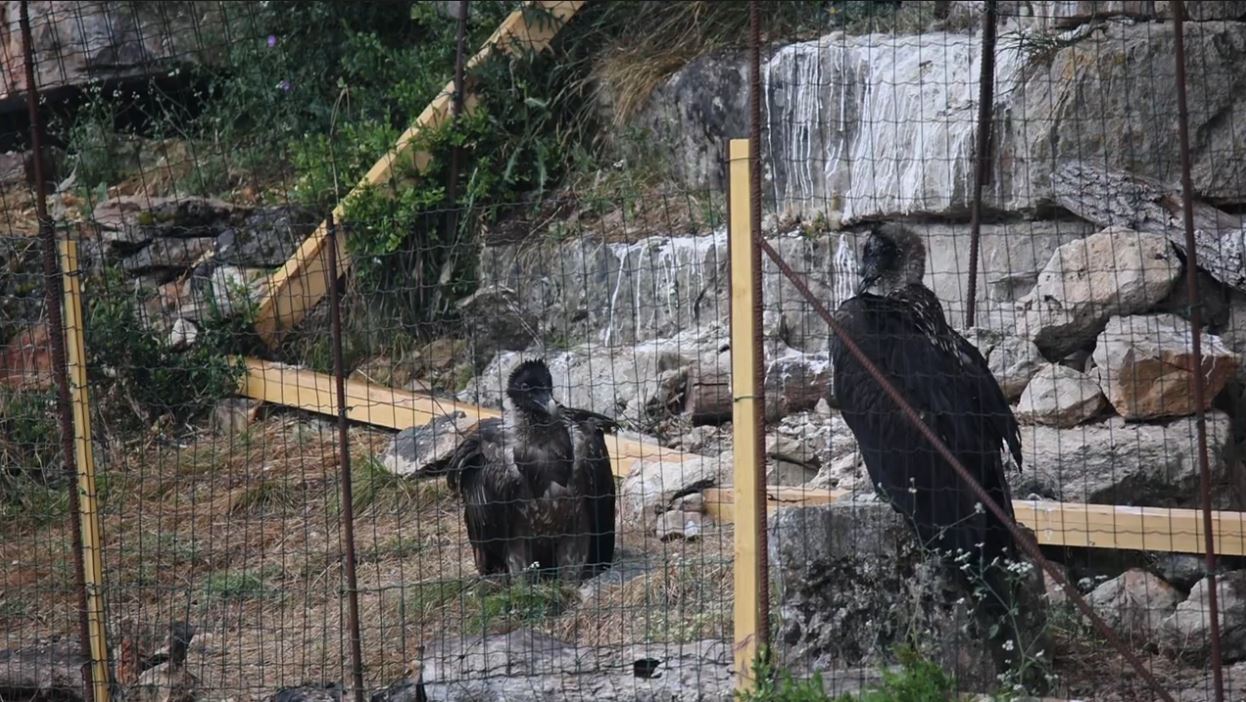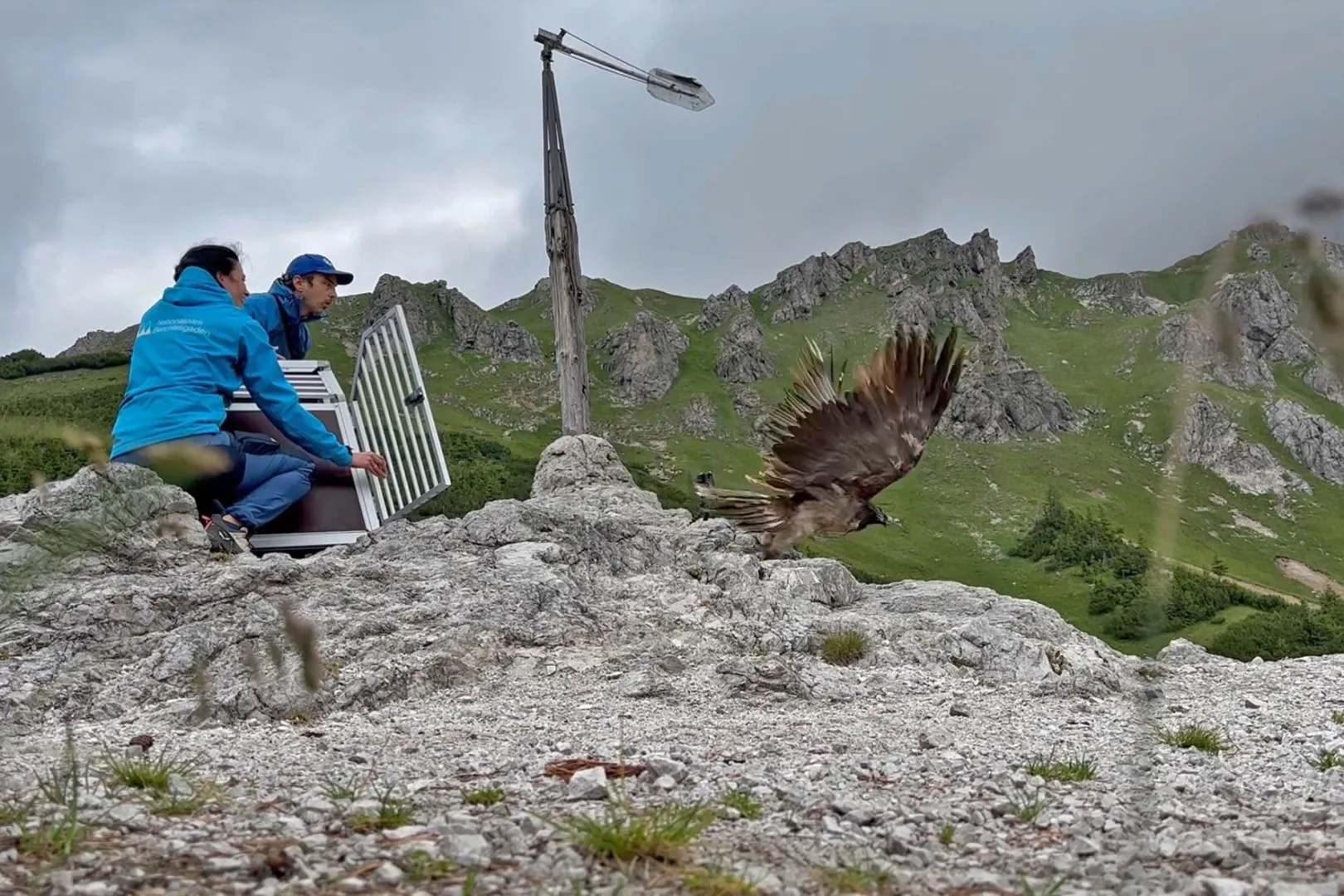
We are 10 days into our campaign to raise €7,500 to get 19 Bearded Vultures on the Move across Europe to find new homes and new mates. Today we thought we’d give you a little insight into what the Bearded Vulture European Endangered Species Programme is.
Species on the verge of extinction
Bearded vultures went extinct in the Alps at the beginning of the 20th Century, and in Europe it was also on the verge of extinction, with less than 60 breeding pairs remaining in the wild, in the Pyrenees, in Corsica and in Crete.

Scientists and conservationists realized in the late 1970s the urgent need to rescue the species and, with 40 birds in captivity in zoos across Europe, they launched a captive-breeding programme to release birds into the wild.
A captive breeding network
Forty years after the founding of the bearded vulture Alpine reintroduction programme, the captive-breeding network the VCF coordinates today, known as the Bearded Vulture European Endangered Species Programme (EEP), is made up of 36 zoos, five specialized breeding centres and two private collections and looks after 174 birds.
This programme is accredited by the European Aquaria and Zoos Association (EAZA), and is a coordinated way to manage the population in captivity to ensure the best genetic diversity, and thus safeguard the endangered wild population of the species.
These birds are two of 31 bearded vultures housed at the headquarters of the Bearded Vulture EEP, the Richard Faust Bartgeier Zuchtzentrum Haringsee in Austria. Moving birds around the network across centres and zoos like this is crucial to ensure the safety and well-being of the birds, as well as the best breeding results, as we continue our conservation work to reintroduce and restock populations in five different areas across Europe.
Join us in this conservation project by supporting our Bearded Vultures on the Move fundraising campaign




